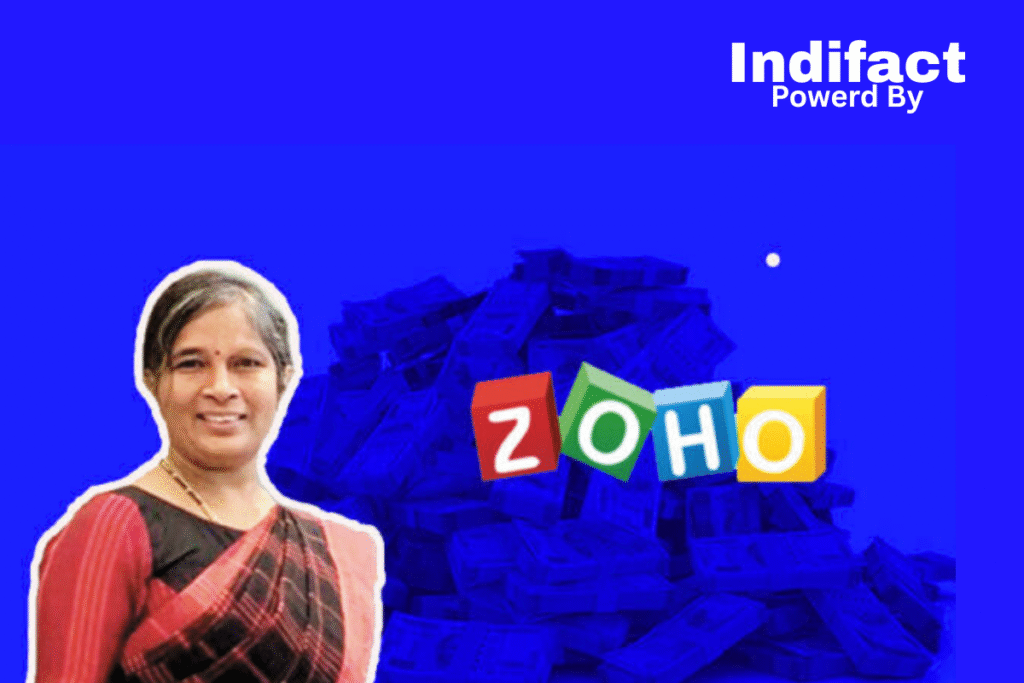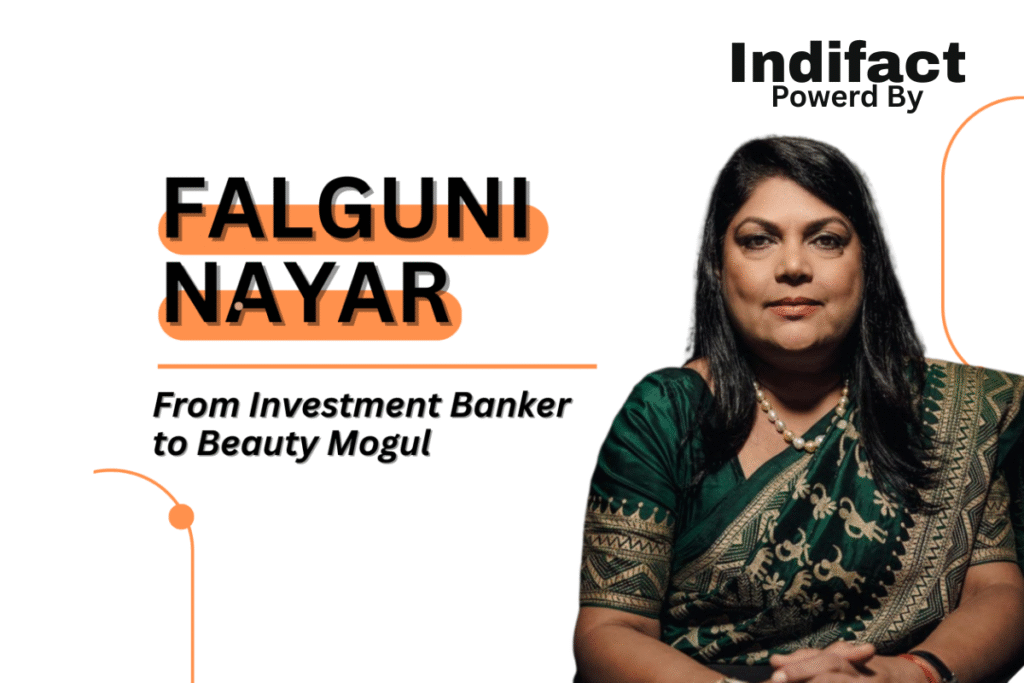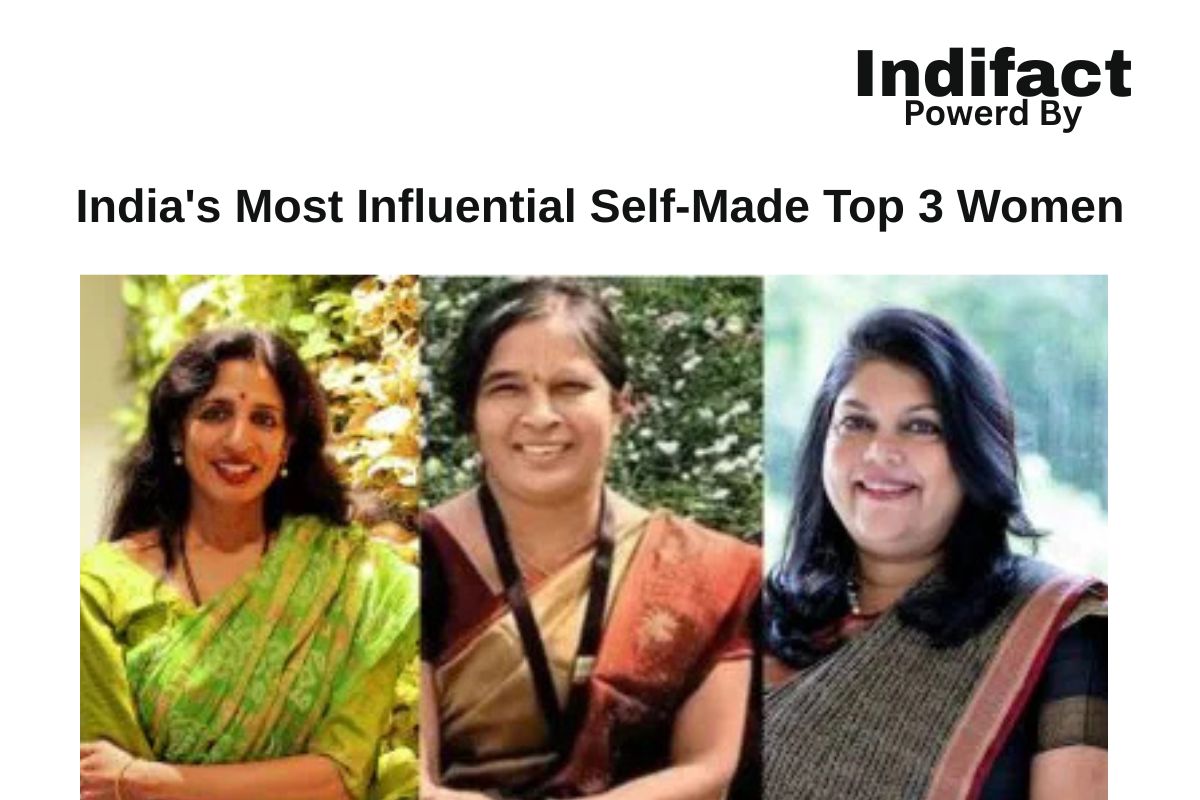The Titans of Indian Enterprise: Charting the Journeys of Ullal, Vembu, and Nayar
Beyond the Billion-Dollar List – The Architects of Modern Industry
In the landscape of global business, wealth is often the simplest metric of success. Yet, to measure the impact of Jayshree Ullal, Radha Vembu, and Falguni Nayar solely by their net worths projected for 2025 at Rs. 50,170 crore, Rs. 46,580 crore, and Rs. 39,810 crore respectively is to miss the monumental scale of their achievements. These figures, while staggering, are merely the financial echoes of a far more profound reality. These three women are not just magnates; they are architects who have designed and constructed foundational pillars of the modern economy. Ullal engineered the high-speed backbone of the cloud, the very infrastructure upon which our digital world is built. Vembu quietly composed the symphony of software that has become the operating system for millions of global businesses. Nayar built the trusted, curated gateway through which a new generation of Indian consumers access the world of beauty and lifestyle.
Their stories represent more than just entrepreneurial triumphs; they offer distinct and powerful blueprints for building an empire in the 21st century. While their paths have converged at the apex of Indian enterprise, their methods are fundamentally different. This report dissects these three master blueprints for value creation: Jayshree Ullal’s model of Decisive Execution, which combines technological superiority with relentless market focus; Radha Vembu’s philosophy of Bootstrapped Conviction, a testament to patient, self-reliant growth and product-centricity; and Falguni Nayar’s strategy of Trust-Led Disruption, which transformed an entire consumer market through education and authenticity. By examining their journeys, we uncover not just the stories of three remarkable individuals, but the core principles of building enduring, impactful, and globally significant enterprises.
Jayshree Ullal – The Architect of the Cloud’s Backbone
From New Delhi to Networking Royalty
Jayshree Ullal‘s journey is a transcontinental epic, beginning in London, rooted in a middle-class upbringing in New Delhi, and culminating in the heart of global technology, Silicon Valley. Her early life was steeped in a culture of academic excellence; her father, a physicist, was instrumental in the establishment of the now world-renowned Indian Institutes of Technology (IITs), giving her a firsthand view of how education could shape nations. This foundation propelled her to the United States at the age of 16, an impressionable teenager transitioning from an all-girls’ Catholic school in India to the male-dominated engineering program at San Francisco State University. After earning a B.S. in Electrical Engineering and a master’s in engineering management, her career began not in management, but deep within the technological bedrock of Silicon Valley at semiconductor firms Fairchild and Advanced Micro Devices (AMD). This early, hands-on experience designing high-speed memory chips and working on strategic development provided her with an unassailable technical credibility. In a field as complex as computer networking, where strategic decisions are intrinsically tied to engineering realities, this background became a non-negotiable asset. It allowed her to command the respect of engineering teams and make visionary bets grounded in a fundamental understanding of the technology, a stark differentiator from leaders who approach the industry from a purely financial or sales-oriented perspective.

Her pivotal career chapter began in 1993, not by joining a corporate giant, but a startup named Crescendo Communications. When Cisco Systems acquired Crescendo in its first-ever acquisition, Ullal was brought into the fold. This entry point is critical; she began her Cisco tenure not as a corporate lifer but as an absorbed entrepreneur. Over the next 15 years, she mastered the art of large-scale execution within Cisco’s fast-paced environment. She was a key force in growing the company’s Catalyst switching business from its inception to a $5 billion powerhouse by 2000, and eventually rose to Senior Vice President, overseeing a data center and switching division with revenues between $10 billion and $15 billion. Her role also involved managing over 20 mergers and acquisitions for the enterprise sector, providing an unparalleled education in corporate strategy and integration. This 15-year crucible forged a unique leader—one who possessed the scrappy, innovative mindset of a startup founder and the disciplined, strategic mind of a corporate general capable of commanding a global operation. This duality would become the defining characteristic of her future success.
A Leap of Faith into the Cloud
In 2008, Jayshree Ullal stood at a career crossroads. She held one of the most powerful positions at Cisco, a global technology titan. When asked if she wanted to retire there, her answer was a definitive “no”. She felt the pull to “live the Silicon Valley dream one more time” and return to her entrepreneurial roots. This led her to a momentous decision: she left her secure, high-profile role to become the President and CEO of Arista Networks, a four-year-old startup with fewer than 50 employees and, at the time she joined, zero revenue.
This move was not a blind leap but a highly calculated bet, founded on two core convictions: people and a technological sea change. The primary draw was the opportunity to partner with Arista’s founders, particularly the legendary Andy Bechtolsheim, co-founder of Sun Microsystems, whom she knew and trusted from her time at Cisco. Furthermore, having managed Cisco’s multi-billion-dollar data center division, Ullal had a front-row seat to the evolving needs of large-scale computing environments. She understood the limitations of incumbent networking architectures and saw the emerging demand for a new, software-driven approach. She was not just joining a random startup; she was joining a team of proven innovators to solve a massive problem she knew was becoming critical for the future of the internet.
Her vision was for “cloud networking,” a term she championed in a blog post in October 2008, a time when many industry luminaries dismissed the “cloud” as a mere marketing buzzword. The early days were fraught with peril. In an ominous start, Arista’s first major customer, Lehman Brothers, was acquired in her first month on the job, only to collapse the very next month during the 2008 financial crisis. A greater challenge emerged years later. In 2014, just as the Arista team was celebrating a successful Initial Public Offering (IPO), Cisco filed a major lawsuit, informing the press before even notifying Arista a move Ullal described as “humiliating“. However, this legal assault, intended to cripple the burgeoning competitor, had an unintended effect. A lawsuit from a market behemoth like Cisco served as a public validation of Arista’s technology and its growing threat to the established order. Internally, overcoming this existential challenge forged a culture of resilience and conviction. As Ullal noted, “what doesn’t kill us makes us stronger,” and the experience solidified Arista’s identity as a tenacious and formidable innovator.
The Ullal Playbook: Software, Speed, and AI
Under Ullal’s leadership, Arista Networks executed a masterclass in asymmetric competition, growing from a company with zero revenue into an S&P 500 powerhouse with a market capitalization exceeding $100 billion. The strategy was not to challenge Cisco on every front, but to focus on a single point of incumbent weakness—the architectural needs of the new cloud data center and win with a superior model. The core of this model is Arista’s Extensible Operating System (EOS). Instead of a complex web of different operating systems for different products, Arista built a single, high-quality, Linux-based software stack that runs across its entire hardware portfolio. This software-first philosophy delivered unprecedented stability and programmability, which dramatically reduced operational costs for its customers. This focus on quality and reliability is what customers consistently cite as Arista’s most significant advantage. Arista’s initial go-to-market strategy was to target the world’s most demanding customers: the hyperscale “cloud titans” like Microsoft and Meta, and high-performance financial firms. These customers valued performance, openness, and software quality above all else—precisely where Arista’s architecture excelled over legacy systems. By winning over these influential clients, Arista established a beachhead in the most advanced networking environments, with their buying decisions creating a ripple effect across the broader market. This focus allowed Arista to establish market leadership in the transitions to 100G, 200G, and 400G switching.
Now, Ullal is positioning Arista to be the foundational layer for the next great technological shift: Artificial Intelligence. Recognizing that AI workloads place unprecedented demands on network performance, Arista is pioneering the move to 800G Ethernet and is a founding member of the Ultra Ethernet Consortium (UEC), an industry group working to optimize Ethernet to displace InfiniBand as the de facto standard for large-scale AI and high-performance computing. The company projects its AI networking business will generate at least $750 million in revenue in 2025, ensuring that Arista remains the essential backbone for the AI era, just as it was for the cloud era. This core strategy has been augmented by strategic acquisitions to expand into adjacent markets, including campus networking (Mojo Networks), security (Awake Security), and SD-WAN (VeloCloud).
Inspired Leadership
Jayshree Ullal’s leadership philosophy is not just a personal style; it is a strategic weapon perfectly calibrated for a challenger company in a high-stakes technology market. In her own writings, she has articulated a framework for leadership built on four key pillars :
- Deciding with Speed and Conviction: In a fast-paced industry, waiting for perfect information is a recipe for failure. Ullal champions the ability to make clear, crisp decisions based on available data and instinct, with the confidence to iterate and course-correct as new information emerges. This agility is crucial for outmaneuvering larger, slower incumbents.
- Engaging for Impact: True impact, she believes, comes from low-ego leaders who can effectively align all stakeholders customers, partners, and internal teams around a common goal. It involves fostering open debate to arrive at optimal conclusions, rather than making autocratic or purely popular decisions.
- Adapting Proactively: Recognizing that no leader can predict the future, she emphasizes the importance of treating setbacks as opportunities to learn and grow. Some of Arista’s greatest strengths, she notes, were forged in moments of crisis when the team’s conviction was tested.
- Delivering Reliably: While innovation is exciting, Ullal understands that for mission-critical infrastructure, consistency and quality are paramount. She notes that for nine consecutive years, when she asks customers what they like most about Arista, the answer is not the latest feature but its unwavering quality and reliability. This relentless focus on dependability has become Arista’s most powerful differentiator.
This philosophy has cultivated a culture at Arista that values respect, integrity, innovation, and trust. Her leadership is consistently described as visionary, transparent, and collaborative, fostering an environment where excellence can thrive.
Radha Vembu – The Quiet Conductor of a SaaS Symphony
Radha Vembu era defined by the celebrity tech founder, Radha Vembu is a radical anomaly. As the co-founder and majority stakeholder of Zoho Corporation, holding a 47.8% stake in the multi-billion-dollar software giant, she is one of the most powerful and wealthy women in global technology. Yet, she remains deliberately and steadfastly out of the public eye. Described as “reclusive,” she rarely grants interviews, is not active on social media, and prefers to let the company’s products speak for themselves. Her stated philosophy is simple and profound: “The quality of product matters, not the people behind it. This low-profile approach is not merely a personality trait; it is a strategic embodiment of Zoho’s core ethos. The modern tech landscape is saturated with the personal brands of its leaders, where founder charisma is often conflated with company value. Zoho explicitly rejects this model. Its identity is built on product depth, technical excellence, and long-term customer relationships not on hype. Radha Vembu, the quiet, product-focused leader, is the living representation of this philosophy. Her “invisibility” reinforces the message that customers should place their trust in the utility and reliability of the software, not in the cult of a founder’s personality. This leadership style cultivates a unique corporate culture insulated from the relentless pressures of public perception and market noise. By avoiding the spotlight, Vembu and the Zoho leadership team can dedicate their full attention to the complex, long-term challenges of software development. As one industry analyst astutely observed, she is the “physical manifestation of that connective framework” that unites Zoho’s vast and intricate suite of over 45 products, giving tangible form to her brother Sridhar’s “big dream“. This quiet focus enables a culture of deep work, allowing engineers and product managers to build for the long haul, a significant competitive advantage against publicly traded rivals beholden to the whims of quarterly earnings reports.

The Bootstrapping Doctrine: A Philosophy of Self-Reliance
The central organizing principle of Zoho Corporation is its unwavering commitment to “happily bootstrapping”. Co-founded in 1996 as AdventNet, the company has never taken a single dollar of external venture capital, funding its entire global expansion from its own revenues. This is not just a funding strategy; it is a deeply ingrained philosophy that shapes every aspect of the business, from product development and hiring to pricing and corporate culture.
The strategic implications of this self-reliance are profound:
Long-Term Vision: Free from the pressure to deliver short-term returns to outside investors, Zoho can make patient, multi-decade investments in research and development. The company famously spends twice as much on R&D as it does on sales and marketing, a ratio that would be unthinkable in a typical VC-backed firm. This allows them to tackle complex engineering challenges and build a deeply integrated product suite from the ground up, rather than acquiring disparate pieces.
Absolute Autonomy: By remaining private and profitable, Zoho maintains complete control over its destiny. This freedom allows the leadership to take calculated risks, pursue unconventional strategies like its rural expansion, and prioritize customer and employee welfare over shareholder demands.
Inherent Frugality and Efficiency: A bootstrapped model necessitates a culture of financial discipline. Every investment must be justified by its potential for sustainable, profitable growth. This has led Zoho to make strategic long-term decisions, such as building and operating its own data centers instead of relying on public clouds, to control costs and ensure vertical integration.
Customer-Centric Value: Zoho’s pricing philosophy is a direct result of its financial independence. The goal is not to extract maximum value for shareholders but to find a “balance point of mutual benefit” that fosters long-term customer loyalty. This approach of “leaving money on the table” builds deep trust and positions Zoho as a partner in its customers’ growth.
In a tech world littered with the failures of high-valuation, cash-burning startups, Zoho’s journey to over 80 million users and billion-dollar revenues stands as a powerful counter-narrative. It proves that a patient, profitable, and self-reliant approach can achieve massive global scale, offering a sustainable blueprint for the next generation of technology companies.
Hands-On Visionary
Radha Vembu‘s role within Zoho is a testament to the company’s product-centric culture. Despite being the majority owner, her primary and long-held title is Product Manager for Zoho Mail. This is a deliberate choice that signals the supreme importance of product craft over corporate hierarchy. While she could adopt any executive title, she remains deeply embedded in the functional, hands-on work of software creation. This flattens the organizational structure and communicates to every employee that the most valued work at Zoho is the work of building exceptional products. She has overseen Zoho Mail since its inception, a product launched in 2008 that now serves over 15 million users and competes head-to-head with offerings from Google and Microsoft. Her responsibilities extend to the entire Zoho Workplace suite, and she actively contributes to the development of more than 45 distinct products while managing a team of 250 people. Her leadership is described as a blend of deep technical expertise and a commitment to fostering a collaborative and empowering work environment. She is constantly focused on improving what she calls “one of the most technically challenging products in the company,” driven by a desire to “delight and surprise” customers. Her hands-on leadership ensures that the company’s most significant stakeholder is also its most dedicated product champion.
Building a Company and a Community: The Zoho Social Contract
Zoho’s corporate philosophy extends beyond software into a unique social contract that is deeply integrated with its business model. This approach is most evident in two key initiatives that reflect a long-term vision for sustainable and inclusive growth.
The first is a strategic commitment to rural talent development. Rejecting the “mega-office” model concentrated in major metropolitan hubs, Zoho has deliberately opened development centers in smaller towns and rural villages, most notably in Tenkasi, Tamil Nadu. This “transnational localism” is designed to tap into overlooked talent pools, create high-value jobs outside of urban centers, and stimulate local economies, reversing the trend of talent migration.
The second, and perhaps most revolutionary, initiative is Zoho Schools of Learning. Started in 2005 as an experiment, it provides a two-year, skills-based alternative to conventional college education for high school graduates. Students receive intensive, practical training in software development and other disciplines, and upon completion, are offered jobs within the company. This is not simply a philanthropic endeavor; it is a brilliant, long-term talent pipeline born directly from the bootstrapping philosophy. Competing for elite engineering graduates is incredibly expensive. By creating its own educational institution, Zoho invests in raw talent, trains them to its exact standards, and fosters a deeply loyal, skilled, and cost-effective workforce. Today, nearly 15% of Zoho’s employees are graduates of Zoho Schools, a testament to the program’s success. Radha Vembu’s husband, Rajendran Dandapani, serves as the President of Zoho Schools of Learning, creating a direct family connection to this core strategic initiative.
Through these efforts, and Radha’s role as director of the Corpus Foundation focusing on education and healthcare, Zoho demonstrates that its business goals and social mission are not separate objectives, but two sides of the same coin.
Falguni Nayar From Banking Titan to Beauty Entrepreneur
The story of Falguni Nayar is a powerful testament to the idea that “dreams don’t have an expiry date”. In 2012, at the age of 50, a time when many professionals are contemplating the final phase of their careers, Nayar executed one of the most audacious pivots in modern Indian business. She resigned from her role as the Managing Director of Kotak Mahindra Capital, the culmination of a stellar 19-year career in investment banking where she had orchestrated landmark IPOs and spearheaded global expansions for the financial giant. Armed with a vision and $2 million of her own savings, she plunged into the worlds of retail, beauty, and technology three industries in which she had no direct prior experience to found Nykaa. Her motivation was born from a sharp, analytical observation of the market. The Indian beauty and personal care landscape was fragmented, unorganized, and plagued by a trust deficit. Consumers lacked access to a curated selection of genuine products, often resorting to unreliable grey market channels or purchasing from abroad. Nayar saw an opportunity not just to sell products, but to create a trusted, content-rich ecosystem for the modern Indian woman. The name she chose, “Nykaa,” derived from the Sanskrit word “Nayaka” meaning “protagonist” or “one in the spotlight,” perfectly encapsulated this vision: to empower every woman to be the hero of her own life. Nayar’s nearly two decades in high finance were not a career she simply left behind; they were the essential toolkit she deployed to de-risk her entrepreneurial venture. While a typical first-time founder might struggle with financial discipline, Nayar had spent a career analyzing business models, valuing companies, and understanding the fundamentals of profitability and scale. This financial acumen was evident in Nykaa’s foundational strategy, which prioritized building a sustainable, profitable business over the “growth at all costs” mentality common among venture-backed startups. Furthermore, starting at 50 was a distinct strategic advantage. Her ability to self-fund the initial stages gave her complete control, and her established reputation and network provided the credibility needed to convince premium global brands, initially skeptical of a new online platform, to come on board.

Engineering Trust in an Untrusted Market
Falguni Nayar understood that to succeed, Nykaa had to solve not just the logistical problem of product delivery, but the far more significant emotional and informational barriers that prevented Indian consumers from buying beauty products online. The two biggest fears were: “Is this product authentic?” and “How do I choose and use the right product for me?”. Nykaa’s entire strategy was architected to address these core anxieties.
First, to solve the authenticity crisis, Nykaa adopted an inventory-led business model. Unlike marketplaces like Amazon or Flipkart, which allow third-party sellers, Nykaa purchases products directly from brands and manufacturers, storing them in its own warehouses across the country. This capital-intensive approach was a masterstroke. It allowed Nykaa to guarantee 100% genuine products, making “trust” its single most powerful differentiator and core value proposition.
Second, to solve the knowledge gap, Nykaa pioneered a content-first strategy. It positioned itself not as a mere retailer, but as a “beauty advisor”. The company invested heavily in creating a rich ecosystem of educational content, including a massive library of blog posts, expert tutorials on its YouTube channel “Nykaa TV,” and collaborations with dermatologists and beauty experts. This content-driven commerce model educated a generation of consumers, empowering them with the confidence to explore and purchase products online.
Finally, to build community and credibility, Nykaa eschewed expensive celebrity endorsements in favor of a more grassroots approach. It strategically collaborated with an army of nano and micro-influencers whose authentic, relatable reviews resonated far more deeply with consumers. This peer-to-peer influence built a powerful, organic network of brand advocates, cementing Nykaa’s reputation as the go-to destination for trusted beauty advice and products.
Omnichannel Blueprint: Clicks to Bricks
While born as a digital-native brand, Falguni Nayar recognized early on that for a category like beauty, the “physical trial is critical”. This led to the development of a sophisticated omnichannel strategy that seamlessly blends the digital and physical worlds, creating a powerful, data-driven ecosystem.
Starting in 2015, Nykaa began opening physical retail stores, expanding to a network that, as of 2025, includes between 237 and 250 stores across approximately 80 cities in India. These stores are strategically segmented into formats like “Nykaa Luxe,” which houses premium and luxury brands, and “Nykaa On Trend,” which features curated, popular products, catering to different consumer needs. This physical presence is not just about sales; it is a critical component of a larger feedback loop. The vast repository of online purchasing data informs decisions on new store locations, in-store inventory, and regional preferences. In turn, the physical stores act as powerful customer acquisition channels, allowing new consumers to experience the brand firsthand, touch and feel products, and receive personalized advice from beauty assistants. This symbiotic relationship, where each channel makes the other smarter and more effective, creates a formidable competitive moat.
This robust strategy has enabled Nykaa to achieve immense scale. By 2025, the platform boasts a cumulative customer base of over 45 million, offers a curated selection of more than 8,600 brands, and has successfully launched its own “House of Nykaa” portfolio of private-label beauty and fashion brands. It has also expanded into B2B distribution with “Superstore by Nykaa,” serving over 300,000 retailers across 1,100 cities.
This journey from a self-funded startup to an undisputed market leader culminated in a historic moment in November 2021. Nykaa’s Initial Public Offering (IPO) on the Indian stock exchanges was a blockbuster success, oversubscribed by more than 81 times, with the company’s valuation soaring to $13 billion on listing day. The event instantly made Falguni Nayar the wealthiest self-made woman in India, cementing her status as a revolutionary force in Indian retail.
Three Blueprints for Building an Empire
While Jayshree Ullal, Radha Vembu, and Falguni Nayar share the distinction of being self-made billionaires who have built globally recognized enterprises, their paths to the summit offer fundamentally different models of entrepreneurship. An examination of their core strategies reveals three distinct, powerful, and contextually brilliant blueprints for building a modern empire. Each chose a path uniquely suited to the industry they sought to dominate, the market they aimed to capture, and the personal philosophy that guided their leadership.
Dissecting these differences reveals a deeper truth: there is no single “correct” path to building a monumental enterprise. Jayshree Ullal exemplifies the Global Technologist. Her model, forged in the crucible of Silicon Valley, was perfectly designed for a capital-intensive, high-stakes B2B war. It required leveraging venture capital and public markets to fund cutting-edge R&D and scale rapidly to challenge a global incumbent on the world stage. Her leadership style, a hybrid of entrepreneurial agility and corporate discipline, was essential to execute this complex, technology-driven strategy.
Radha Vembu represents the Self-Reliant Builder. Her approach, rooted in a philosophy of absolute independence, was ideal for the patient, long-term development of a comprehensive B2B software ecosystem. By rejecting external capital, Zoho retained complete control, allowing it to prioritize product depth, build a sustainable and unique talent pipeline, and foster a culture insulated from short-term market pressures. Her quiet, product-obsessed leadership is the very embodiment of this philosophy.
Falguni Nayar is the archetypal Domestic Market Shaper. Her strategy was meticulously tailored to win a high-trust B2C market in a specific geography: India. It required a deep understanding of the local consumer’s anxieties and aspirations. Her model, which began with self-funding and later strategically incorporated private and public capital, was designed to finance the capital-intensive inventory and physical retail expansion needed to build an unshakeable foundation of trust and authenticity. Her background as a financial strategist gave her the tools to execute this complex omnichannel vision with discipline and foresight.
Together, these three titans demonstrate the rich diversity of successful entrepreneurship. They prove that victory can be achieved through head-on technological disruption, patient and profitable ecosystem building, or the ground-up creation of a new consumer category. Their legacies offer an invaluable lesson: the most effective strategy is not one borrowed from a playbook, but one authentically forged from the leader’s vision, the company’s values, and the unique demands of the market it seeks to serve.




Fantastic explanation.馃憤 Great mix of information and simplicity.馃憤